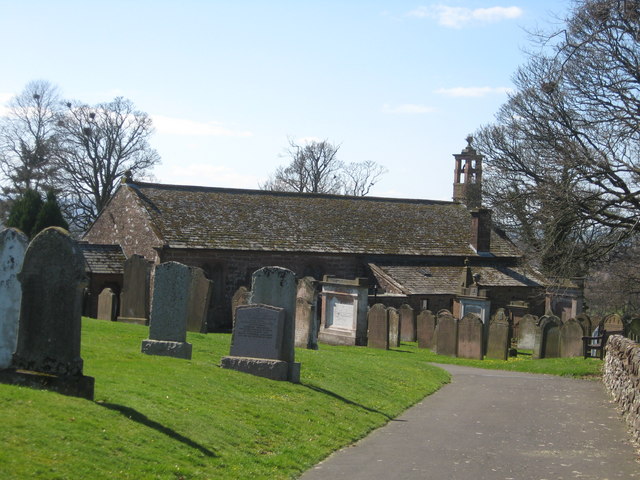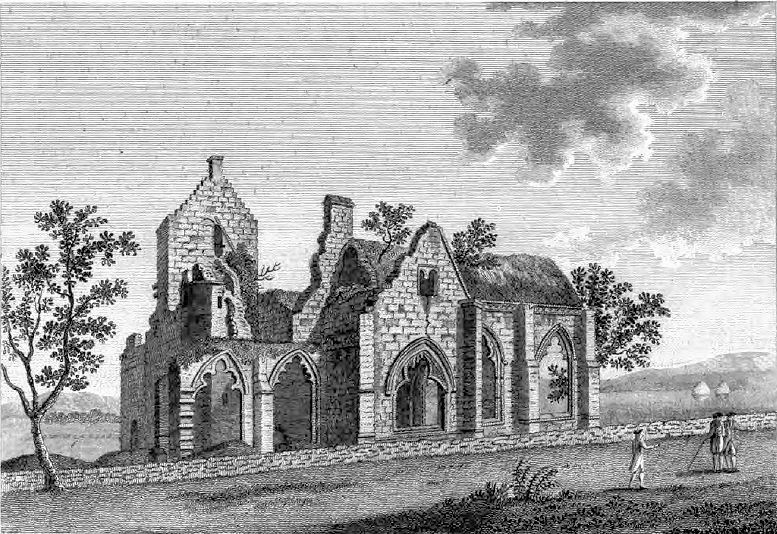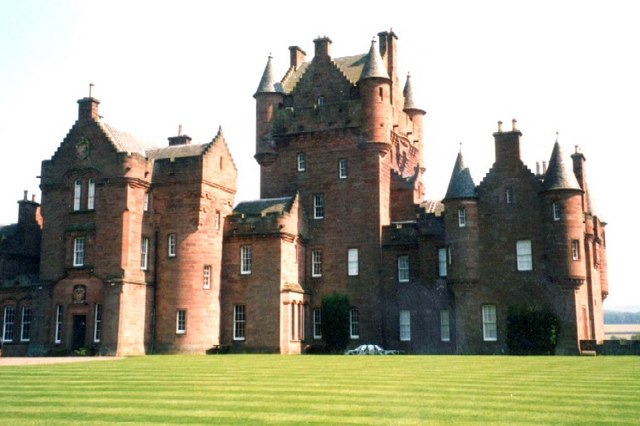|
Tinwald, Dumfries And Galloway
Tinwald is a village in Dumfries and Galloway, south-west Scotland, lying a little north of Locharbriggs outside Dumfries. Tinwald is also the name of a civil parish in the county of Dumfriesshire. The village is near the former RAF Tinwald Downs which is the now the Dumfries Aviation Museum. Tinwald Church The Church, built in 1769 on the foundations of an earlier church, is on the side of Tinwald Hill and visible from the A701 road. The Barony and Rectory of Tinwald, before and after the Reformation, belonged to the Maxwell family who appointed the vicars and later the ministers. In 1504 Willelmus Blak was vicar of Tynwald. On 13 July 1619 Robert Maxwell was served heir to his father, John Maxwell of "terris de Tynwald" in "baroniam de Tynwald".R.M.S. page 73, no.228. AD1621 charter. http://wackzut.archive.org/stream/registrummagnisi08scot#page/72/mode/2up Tinwald Mote In the 15th century the Tinwald Mote was still the caput or legal head of the barony, where sasine (posses ... [...More Info...] [...Related Items...] OR: [Wikipedia] [Google] [Baidu] |
Tinwald Kirk - Geograph
Tinwald may refer to: Places * Tinwald, New Zealand * Tinwald, Dumfries and Galloway, Scotland ** RAF Tinwald Downs, a Royal Air Force base, located near Tinwald See also * Charles Erskine, Lord Tinwald (former Lord of Justiciary) * Tinwald School * Tynwald (other) {{disambig, geo ... [...More Info...] [...Related Items...] OR: [Wikipedia] [Google] [Baidu] |
Tinwald, Dumfries And Galloway
Tinwald is a village in Dumfries and Galloway, south-west Scotland, lying a little north of Locharbriggs outside Dumfries. Tinwald is also the name of a civil parish in the county of Dumfriesshire. The village is near the former RAF Tinwald Downs which is the now the Dumfries Aviation Museum. Tinwald Church The Church, built in 1769 on the foundations of an earlier church, is on the side of Tinwald Hill and visible from the A701 road. The Barony and Rectory of Tinwald, before and after the Reformation, belonged to the Maxwell family who appointed the vicars and later the ministers. In 1504 Willelmus Blak was vicar of Tynwald. On 13 July 1619 Robert Maxwell was served heir to his father, John Maxwell of "terris de Tynwald" in "baroniam de Tynwald".R.M.S. page 73, no.228. AD1621 charter. http://wackzut.archive.org/stream/registrummagnisi08scot#page/72/mode/2up Tinwald Mote In the 15th century the Tinwald Mote was still the caput or legal head of the barony, where sasine (posses ... [...More Info...] [...Related Items...] OR: [Wikipedia] [Google] [Baidu] |
Dumfries And Galloway
Dumfries and Galloway ( sco, Dumfries an Gallowa; gd, Dùn Phrìs is Gall-Ghaidhealaibh) is one of 32 unitary council areas of Scotland and is located in the western Southern Uplands. It covers the counties of Scotland, historic counties of Dumfriesshire, Kirkcudbrightshire, and Wigtownshire, the latter two of which are collectively known as Galloway. The administrative centre and largest settlement is the town of Dumfries. The second largest town is Stranraer, on the North Channel (Great Britain and Ireland), North Channel coast, some to the west of Dumfries. Following the 1975 reorganisation of local government in Scotland, the three counties were joined to form a single regions and districts of Scotland, region of Dumfries and Galloway, with four districts within it. The districts were abolished in 1996, since when Dumfries and Galloway has been a unitary local authority. For lieutenancy areas of Scotland, lieutenancy purposes, the area is divided into three lieutenancy a ... [...More Info...] [...Related Items...] OR: [Wikipedia] [Google] [Baidu] |
Scotland
Scotland (, ) is a country that is part of the United Kingdom. Covering the northern third of the island of Great Britain, mainland Scotland has a border with England to the southeast and is otherwise surrounded by the Atlantic Ocean to the north and west, the North Sea to the northeast and east, and the Irish Sea to the south. It also contains more than 790 islands, principally in the archipelagos of the Hebrides and the Northern Isles. Most of the population, including the capital Edinburgh, is concentrated in the Central Belt—the plain between the Scottish Highlands and the Southern Uplands—in the Scottish Lowlands. Scotland is divided into 32 administrative subdivisions or local authorities, known as council areas. Glasgow City is the largest council area in terms of population, with Highland being the largest in terms of area. Limited self-governing power, covering matters such as education, social services and roads and transportation, is devolved from the Scott ... [...More Info...] [...Related Items...] OR: [Wikipedia] [Google] [Baidu] |
Locharbriggs
Locharbriggs is a village in Dumfries and Galloway, Scotland. It is located near the Lochar Water, north-northeast of the town of Dumfries. It was one of several villages that stood on the edge of the Lochar Moss which was largely reclaimed in the 19th Century. The Locharbriggs locality (which also includes neighbouring Heathhall) had an estimated population of in 2016. Locharbriggs is known for the quarrying of distinctive red sandstone of the Locharbriggs Sandstone Formation. This has been used for buildings in towns and cities including Dumfries, Glasgow and Edinburgh. The stone has also been exported further afield, including for the construction of the steps of the Statue of Liberty The Statue of Liberty (''Liberty Enlightening the World''; French: ''La Liberté éclairant le monde'') is a List of colossal sculpture in situ, colossal neoclassical sculpture on Liberty Island in New York Harbor in New York City, in the U ... in New York. Only one quarry now remains ac ... [...More Info...] [...Related Items...] OR: [Wikipedia] [Google] [Baidu] |
Dumfries
Dumfries ( ; sco, Dumfries; from gd, Dùn Phris ) is a market town and former royal burgh within the Dumfries and Galloway council area of Scotland. It is located near the mouth of the River Nith into the Solway Firth about by road from the Anglo-Scottish border and just away from Cumbria by air. Dumfries is the county town of the historic county of Dumfriesshire. Before becoming King of Scots, Robert the Bruce killed his rival the Red Comyn at Greyfriars Kirk in the town on 10 February 1306. The Young Pretender had his headquarters here during a 3-day sojourn in Dumfries towards the end of 1745. During the Second World War, the bulk of the Norwegian Army during their years in exile in Britain consisted of a brigade in Dumfries. Dumfries is nicknamed ''Queen of the South''. This is also the name of the town's professional football club. People from Dumfries are known colloquially in Scots language as ''Doonhamers''. Toponymy There are a number of theories on the etymo ... [...More Info...] [...Related Items...] OR: [Wikipedia] [Google] [Baidu] |
Civil Parishes In Scotland
Civil parishes are small divisions used for statistical purposes and formerly for local government in Scotland. Civil parishes gained legal functions in 1845 which parochial boards were established to administer the poor law. Their local government functions were abolished in 1930 with their powers transferred to county or burgh councils. Since 1975, they have been superseded as the smallest unit of local administration in Scotland by community councils. History Civil parishes in Scotland can be dated from 1845, when parochial boards were established to administer the poor law. While they originally corresponded to the parishes of the Church of Scotland, the number and boundaries of parishes soon diverged. Where a parish contained a burgh, a separate ''landward'' parish was formed for the portion outside the town. Until 1891 many parishes lay in more than one county. In that year, under the terms of the Local Government (Scotland) Act 1889, the boundaries of most of the civil p ... [...More Info...] [...Related Items...] OR: [Wikipedia] [Google] [Baidu] |
Dumfriesshire
Dumfriesshire or the County of Dumfries or Shire of Dumfries (''Siorrachd Dhùn Phris'' in Gaelic) is a historic county and registration county in southern Scotland. The Dumfries lieutenancy area covers a similar area to the historic county. In terms of historic counties it borders Kirkcudbrightshire to the west, Ayrshire to the north-west, Lanarkshire, Peeblesshire and Selkirkshire to the north, and Roxburghshire to the east. To the south is the coast of the Solway Firth, and the English county of Cumberland. Dumfriesshire has three traditional subdivisions, based on the three main valleys in the county: Annandale, Eskdale and Nithsdale. These had been independent provinces in medieval times but were gradually superseded as administrative areas by the area controlled by the sheriff of Dumfries, or Dumfriesshire. A Dumfriesshire County Council existed from 1890 until 1975. Since 1975, the area of the historic county has formed part of the Dumfries and Galloway council ... [...More Info...] [...Related Items...] OR: [Wikipedia] [Google] [Baidu] |
RAF Tinwald Downs
Royal Air Force Dumfries or more simply RAF Dumfries was a former Royal Air Force station located near Dumfries, Dumfries and Galloway Scotland. The airfield opened on 17 June 1940 and was sold in 1960 to a private firm. The disused airfield is now used as the Dumfries and Galloway Aviation Museum. History No. 18 Maintenance Unit RAF, (18 MU) was allotted to No. 41 Group RAF (41 Gp) and became the lodger unit on 17 June 1940. No aircraft were flown in until the end of June when the obstructions placed on the airfield to prevent enemy aircraft from landing were removed. 18 MU reverted to a tenant unit on 13 July 1940 and No. 10 Bombing and Gunnery School RAF (10 B&GS) of No. 25 Group RAF (25 Gp) (RAF Flying Training Command) relocated from RAF Warmwell, Dorset. 10 B&GS trained bomb-aimers and gunners in Handley Page H.P.54 Harrows and Fairey Battles before further training at Operational Training Units. The airfield consisted of a grass runway, upgraded to hard surfaces du ... [...More Info...] [...Related Items...] OR: [Wikipedia] [Google] [Baidu] |
Scottish Reformation
The Scottish Reformation was the process by which Kingdom of Scotland, Scotland broke with the Pope, Papacy and developed a predominantly Calvinist national Church of Scotland, Kirk (church), which was strongly Presbyterianism, Presbyterian in its outlook. It was part of the wider European Protestant Reformation that took place from the sixteenth century. From the late fifteenth century the ideas of Renaissance humanism, critical of aspects of the established Catholic Church in Scotland, Catholic Church, began to reach Scotland, particularly through contacts between Scottish and continental scholars. In the earlier part of the sixteenth century, the teachings of Martin Luther began to influence Scotland. Particularly important was the work of the Lutheran Scot Patrick Hamilton (martyr), Patrick Hamilton, who was executed in 1528. Unlike his uncle Henry VIII of England, Henry VIII in England, James V of Scotland, James V avoided major structural and theological changes to the ch ... [...More Info...] [...Related Items...] OR: [Wikipedia] [Google] [Baidu] |
Caput
Latin words and phrases {{Short pages monitor ... [...More Info...] [...Related Items...] OR: [Wikipedia] [Google] [Baidu] |
Scottish Feudal Barony
In Scotland, a baron or baroness is the head of a feudal barony, also known as a prescriptive barony. This used to be attached to a particular piece of land on which was situated the ''caput'' (Latin for "head") or essence of the barony, normally a building, such as a castle or manor house. Accordingly, the owner of the piece of land containing the ''caput'' was called a baron or baroness. According to Grant, there were around 350 identifiable local baronies in Scotland by the early fifteenth century and these could mostly be mapped against local parish boundaries. The term baron was in general use from the thirteenth century to describe what would have been known in England as a knight of the shire.Alexander Grant, "Franchises North of the Border: Baronies and Regalities in Medieval Scotland", Chapter 9, Michael Prestwich. ed., ''Liberties and Identities in Medieval Britain and Ireland'' (Boydell Press: Woodbridge, 2008) The 1896 edition of ''Green's Encyclopaedia of the Law o ... [...More Info...] [...Related Items...] OR: [Wikipedia] [Google] [Baidu] |






